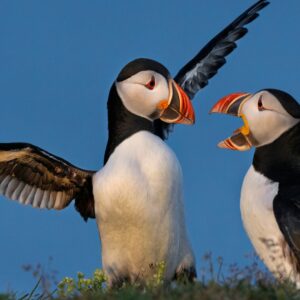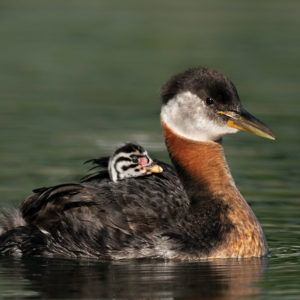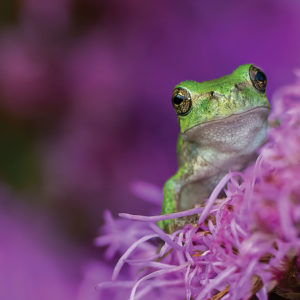Power and Strength: The Bald Eagle
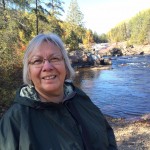
Valerie Assinewe,
Guest Blogger
To the ancient Romans, it stood for power and strength; to the Persians, it symbolized wisdom; to Amerindians, its ability to soar to great heights made it a messenger of the gods. Across centuries, continents and cultures, many species of eagle have featured in myth, folklore and heraldry. The Bald Eagle, illustrated in this month’s 2017 Nature Canada calendar, is perhaps the most widely-recognized national symbol in the world.
Where do they live?
The Bald Eagle (Haliaeetus leucocephalus), one of Canada’s most easily recognized raptors (a bird of prey that hunts and kills with its feet), was once common throughout North America. It can still be found in most parts of Canada, excluding Nunavut; most parts of the United States; and coastal and interior Mexico. The best place to look for Bald Eagles are near lakes, rivers, marshes and coasts.
What do they look like?
The Bald Eagle has a bright white head, neck, and tail, and a dark brown body. Its massive hooked beak is bright yellow, as are its powerful legs. The retractable talons are black. Adults have very pale, piercing eyes.
The Bald Eagle is 71-96 cm in length, weighs from 3-6.3 kg, and has a 1.8-2.3 m wingspan. Females are larger than males.
They soar on flattened wings, and in silhouette show as much head and neck in front of the wing as tail projecting behind.
What do they eat?
While they are primarily fish eaters, Bald Eagles will also feed on mammals, birds, carrion and garbage, sometimes taking these from other predators. Their carnivorous and combative behaviour are key to their survival. When food is plentiful, they can gorge on a surprising amount, which they digest slowly. They can then fast for many days, and even weeks.
How do they reproduce?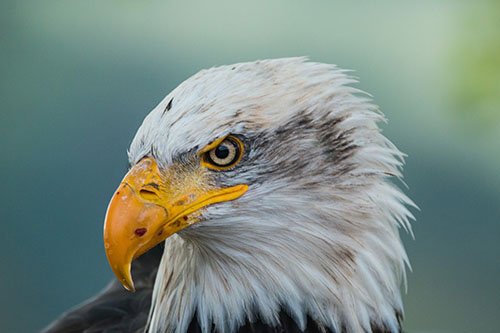
The Bald Eagle is monogamous and believed to pair for life. The pair bond is reinforced through spectacular, acrobatic flight displays. These include the pair flying to a great height, locking talons, and cartwheeling towards the ground, only breaking off at the last moment. In Canada, the breeding season ranges from April to August.
Both sexes construct the nest, called an “aerie”, usually in a large and tall tree near a body of water. Built with sticks and lined with grass, moss, seaweed or other vegetation, the aerie is reused and gradually expanded for years.
One to three white eggs are laid and incubated by both parents for approximately 35 days. Eaglets hatch covered with light grey feathers; after about three weeks, their plumage becomes brown.
First flights usually occur at 9-10 weeks once the wing and tail feathers are developed. Young eagles continue to depend on the parents for food to 17-23 weeks, when the bond fades.
Young eagles acquire the distinctive white and brown colouration of the adult at 4-5 years of age—about the time they will start to breed.
The Bald Eagle lives up to 30 years in the wild, but its average lifespan is 15-20 years. A captive eagle was reported to be at least 48 years old.
Eyes like an eagle?
One of the most remarkable features of the Bald Eagle is its extraordinary vision. Like other birds of prey, eagles, can see 4-7 times farther than an average human. Two eyeball features result in sharp focus and central magnification: the retina of eagles’ eyes have a million light-sensitive cells per square mm of retina, five times more than a human’s 200,000; and, they have a much deeper fovea—a cone-rich structure in the backs of the eyes that detects light from the center of the visual field—that provides extra magnification. In addition to these adaptations, eagles, like all birds, have superior colour vision: while humans see just three basic colours, eagles see five. Eagles and hawks have yet another hunter asset: their eyes are angled 30 degrees away from the midline of the face providing a 340-degree field of view—almost double the human field of view. These adaptations gives eagles extremely keen eyesight and enable them to spot even well-camouflaged prey up to 1.6 km away!
Interesting stuff
- The Bald Eagle is the only eagle solely native to North America.
- Northern coastal populations are largely resident, but inland Canadian birds migrate south to areas of open water or to the coast during winter.
- The Bald Eagle is the second largest North American bird of prey, after the Californian condor.
- It may look bald, but the Bald Eagle’s head is actually covered with white feathers. The name “Bald” Eagle comes from an old English word, “balde,” meaning white.
- It’s not the highest flyer—that honour goes to a vulture—but a Bald Eagle can soar over 3,000 m high, majestically gliding and riding thermal air currents.
Bald Eagle numbers dropped in the 19th century due to human activity. Pesticide bioaccumulation in their principle food source (fish) accelerated their decline in the 20th century: buildup of DDT led to reproductive failure and thin egg shells that broke as the adults tended to them. Thanks to a ban on DDT in the early 1970s and concerted conservation efforts, the Bald Eagle population has rebounded. The current major threats to the Bald Eagle are loss of habitat due to development of shorelines and pollution. You can do your part by supporting our efforts to protect the forest and shoreline habitats of the majestic Bald Eagle. If you want to learn more about the raptors of Canada, check out our Raptors and Owls e-Book!

